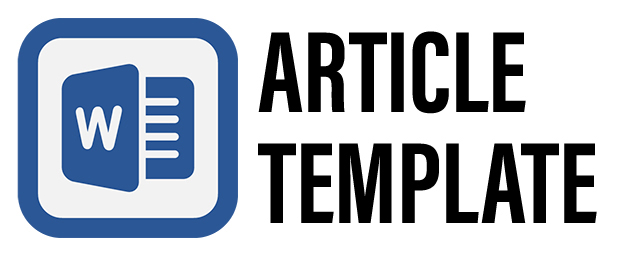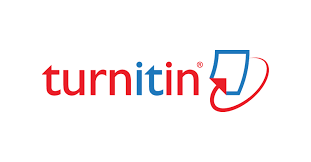PENGARUH MODELING INSTRUCTION DALAM MENGANTARKAN SISWA MENGUASAI TOPIK SUHU DAN KALOR SERTA APLIKASINYA
The Effect of Modeling Instruction in Enhancing Students’ Understanding on the Topic of Temperature and Heat as well as Their Applications
DOI:
https://doi.org/10.32550/teknodik.vi.890Keywords:
modeling instruction, suhu dan kalor, penguasaan konsepAbstract
Tujuan dari penelitian ini adalah untuk mengetahui bagaimana modeling instruction mengantarkan siswa menguasai konsep suhu dan kalor serta aplikasinya dalam bidang informatika. Penelitian ini merupakan penelitian eksperimen dengan desain one group pretest-posttest. Subjek penelitian terdiri atas 34 siswa Teknik Komputer dan Jaringan SMK Al Munawwariyyah. Hasil penelitian menunjukkan bahwa terjadi kenaikan nilai n-gain rata-rata sebesar 0,49 (medium) dengan effect size sebesar 1,04 (sangat tinggi). Fasilitas pembelajaran modeling instruction, yang memberikan kesempatan kepada siswa untuk memodelkan masalah, berhasil mengantarkan siswa untuk meningkatkan kemampuannya dalam membuat model konversi suhu, deteksi suhu berbasis Arduino, dan analisis perpindahan kalor dalam sistem central processing unit (CPU). Beberapa materi, di mana pencapaian siswanya signifikan, adalah konversi suhu, perpindahan kalor, dan analisis troubleshooting pada sistem pendingin CPU.
The purpose of this research is to find out how modeling instruction leads students to master the concept of temperature and heat as well as their application in the field of informatics. This research is an experimental research with one group pretest[1]posttest design. The research subject consists of 34 students of Computer and Network Engineering at SMK Al Munawwariyyah. The result shows that there is an increase in the average n-gain value of 0.49 (medium) with the effect size of 1.04 (very high). Modelling instruction learning facilities, that allow students to model problems, have successfully led students to improve their abilities in making models of temperature conversion, Arduino-based temperature detection, and analysis of heat transfer in the central processing unit (CPU) system. Some materials, of which the students make significant achievement, are temperature conversion, heat transfer, and troubleshooting analysis in CPU cooling system.
References
Apriyani, T.D., Fadiawati, N., dan Syamsuri, M.M.F. (2019). “The Effectiveness of Problem-Based Learning on the Hoax Informations to Improve Students’ Critical Thinking Skills (Related to Some Foods and Beverages)”. International Journal of Chemistry Education Research, 3(1), 15–22. https://doi.org/10.20885/ijcer.vol3.iss1.art3.
Arends, R. (2012). Learning to Teach (9th ed.). New York: McGraw-Hill.
Brewe, E., dan Sawtelle, V. (2018). "Modelling Instruction for University Physics: Examining the Theory in Practice". European Journal of Physics, 39(5), 054001. https://doi.org/10.1088/1361-6404/aac236.
Dukerich, Larry (2015). "Applying Modeling Instruction to High School Chemistry to Improve Students’ Conceptual Understanding". Journal of Chemical Education, 92(8), 1315–1319. doi:10.1021/ed500909w.
Hardianti, D., Rizki, M., dan Yanti, F. (2019). "Penggunaan Dht11 dan Arduino Uno sebagai Pendeteksi Suhu pada Laptop". Relativitas: Jurnal Riset Inovasi Pembelajaran Fisika, 1(2), 38. https://doi.org/10.29103/relativitas.v1i2.1463.
Indriyani, F., Siswanto, J., dan Khoiri, N. (2018). "Pengaruh Modeling Instruction terhadap Kemampuan Pemecahan Masalah Fisika pada Materi Usaha dan Energi Siswa Kelas X MIPA SMA Muhammadiyah Mayong, Jepara". Jurnal Penelitian Pembelajaran Fisika, 9(1), 40. https://doi.org/10.26877/jp2f.v9i1.2314.
Jenkin, J., Howard, E., dan Department of Technology, Valvoline Inc., Lexington, Kentucky. (2019). "Implementation of Modeling Instruction in a High School Chemistry Unit on Energy and States of Matter". Science Education International, 30(2). https://doi.org/10.33828/sei.v30.i2.3.
Kim, H.-Y. (2013). "Statistical Notes for Clinical Researchers: Assessing Normal Distribution (2) Using Skewness and Kurtosis". Restorative Dentistry & Endodontics, 38(1), 52. https://doi.org/10.5395/rde.2013.38.1.52.
Mustofa, Z. (2020). "Evaluasi Penyelenggaraan Ujian Semester Berbasis Komputer (USBK) Menggunakan Model CIPP". Jurnal Teknodik, 2, 15. https://doi.org/10.32550/teknodik.v0i2.519.
Mustofa, Z., Sutopo, S., Mufti, N., dan Asmichatin, A. (2019). "The Impact of Modeling Instruction Based on System Toward Work-Energy Concept Understanding". Jurnal Penelitian & Pengembangan Pendidikan Fisika, 5(2), 145–154. https://doi.org/10.21009/1.0520.
Stammen, A., Malone, K., dan Irving, K. (2018). "Effects of Modeling Instruction Professional Development on Biology Teachers’ Scientific Reasoning Skills". Education Sciences, 8(3), 119. https://doi.org/10.3390/educsci8030119.
Szucs, D., dan Ioannidis, J.P.A. (2017). "Empirical Assessment of Published Effect Sizes and Power in the Recent Cognitive Neuroscience and Psychology Literature". PLOS Biology, 15(3), e2000797. https://doi.org/10.1371/journal.pbio.2000797.
Taherdoost, Hamed. (2016). "Validity and Reliability of the Research Instrument; How to Test the Validation of a Questionnaire/Survey in a Research". Available at SSRN: https://ssrn.com/abstract=3205040 or http://dx.doi.org/10.2139/ssrn.3205040.
Downloads
Published
How to Cite
Issue
Section
Citation Check
License
Copyright (c) 2022 Jurnal Teknodik

This work is licensed under a Creative Commons Attribution-NonCommercial-ShareAlike 4.0 International License.
Please download and complete the Form, Copyright Transfer, and Ethics Statement Form. The following is provided at the time of submitting the text (Upload Additional Files):










